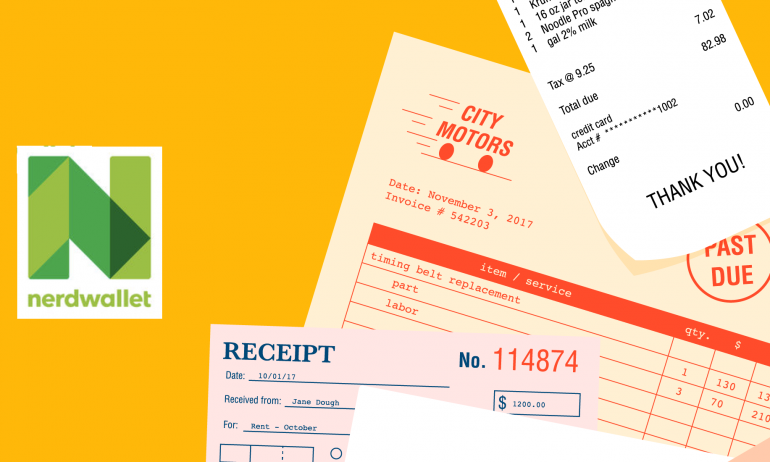2017 American Household Credit Card Debt Study

Many or all of the products featured here are from our partners who compensate us. This influences which products we write about and where and how the product appears on a page. However, this does not influence our evaluations. Our opinions are our own. Here is a list of our partners and here's how we make money.
Americans’ total credit card debt continues to climb, reaching an estimated $905 billion — an almost 8% increase from the previous year — according to a NerdWallet analysis. [1]
And the average household that’s carrying credit card debt has a balance of $15,733. Households with any kind of debt owe $132,090 (including mortgages), on average, the data analysis found.
NerdWallet’s 2017 household debt study shows that several major spending categories have outpaced income growth over the past decade; many Americans are putting medical expenses on credit cards; and the average indebted household is paying hundreds of dollars in credit card interest each year.
This is the 2017 version of NerdWallet’s annual household debt study. Click here to read the most recent study.
It’s not all bad news, though: Household income growth is no longer being outpaced by the total cost of living. And according to the results of a new survey, a significant number of people with credit card debt blame it on unnecessary spending, which means consumers can choose to cut their spending and pay down their balances.
Before Americans can begin working to lower their debt, it’s important to know how much it is. Here’s what the typical indebted household owes, as well as total consumer debt balances in the U.S., according to NerdWallet’s analysis:
Type of debt | Total owed by average U.S. household carrying this type of debt | Total debt owed by U.S. consumers |
|---|---|---|
Credit cards | $15,733 | $905 billion |
Mortgages | $174,867 | $8.74 trillion |
Auto loans | $27,807 | $1.21 trillion |
Student loans | $46,831 | $1.36 trillion |
Any type of debt | $132,090 | $12.96 trillion |
Debt balances are current as of September 2017
The $905 billion in total credit card debt calculated by NerdWallet is lower than the $1 trillion commonly cited elsewhere in the media. That’s because the $1 trillion estimate includes what’s called “prearranged overdraft plans” or overdraft lines of credit that don’t necessarily belong to credit card users. With these overdraft plans, consumers can withdraw money and make payments from the account with the credit line up to the credit limit.
Since NerdWallet’s number focuses on credit card debt only, the $905 billion is a more accurate estimate of how much debt is outstanding. It’s also important to note that this total includes the balances of cardholders who pay off their cards in full every month, as well as those who carry debt from one month to the next.
To determine how much debt Americans are carrying and how much it’s costing them in 2017, NerdWallet analyzed data from several sources, including the Federal Reserve Bank of New York and the U.S. Census Bureau (see additional details in the methodology below). For this study, NerdWallet used an estimate of more than 126 million U.S. households based on Census Bureau data.
NerdWallet also commissioned a survey, conducted online by Harris Poll, of more than 2,000 U.S. adults in November 2017. In the survey, Americans were asked about their credit card payment habits and how they got into debt.
Key findings
Costs rise, income hasn’t kept up. Over the past decade, medical costs have increased 34% and food prices went up 22%, which outpaced income growth (20%), NerdWallet’s analysis found. [2]
Health care takes a toll. Up to 27 million U.S. adults are putting medical expenses on credit cards, according to NerdWallet’s analysis, [3] costing them an average of $471 in interest for a year’s worth of out-of-pocket medical spending. That’s more than $12 billion total. [4]
Credit card debt comes with a cost. The average household with revolving credit card debt pays $904 in interest annually.
Income grows faster than cost of living
Median annual household income has grown 20% over the past decade, while the cost of living has increased 18%, NerdWallet’s data analysis found. [6] However, significant expenses in Americans’ budgets — medical care, housing and food — have outpaced income growth.
Four major spending categories have increased faster than income growth since 2007: medical expenses (34%), “other” expenses (30%), food and beverages (22%) and housing (20%), according to NerdWallet’s analysis. [7]
And these expenses are some of the biggest for many Americans. Add in the higher cost of living in some places or chronic health problems, and it can be even harder for people to live without going into debt.
When it comes to credit card debt, some people think it’s the result of overspending, while others blame it on the rising cost of living for necessities. Our survey found that consumers accumulate credit card debt for different reasons, including spending above their means, bouts of unemployment and paying for the essentials that their income doesn’t cover.
About 2 in 5 Americans who have ever had credit card debt (41%) reported that spending more than they could afford on unnecessary purchases contributed to them going into credit card debt, the NerdWallet survey found. A third (33%) said that spending on necessities their income couldn’t cover contributed to their credit card debt balances. The rising cost of living may be partly to blame, particularly in the spending categories, like health care, that have increased the most over the past decade.
What you can do
The cost of debt includes the opportunities you must forgo in order to pay it off. In the NerdWallet survey, many Americans who have been in credit card debt said that if they didn’t have credit card debt to pay off, they would save that money for emergencies (57%), save it for a future goal (50%) and/or put the money toward paying down other debt (33%).
The quickest way to get rid of your debt and start working toward other financial goals is to cut expenses to free up cash for larger debt payments.
“Finding a way to put money toward paying off debt, especially high interest debt, is the best way to free yourself from the vise grip debt can have on your budget,” says Kimberly Palmer, NerdWallet’s credit card expert.
“Taking small steps, such as making sure savings are in high-yield accounts, renegotiating monthly bills and using a cash-back credit card can free up cash that can be put toward debt payments until they are paid off in full,” she says. “Also, comb through your transactions over the last few months to see what items you can cut, such as subscriptions, restaurant meals or entertainment expenses.”
Medical expenses and the cost of interest
In the past decade, medical costs have increased 34%, which is more than any other major spending category and significantly more than income. [2]
According to a 2016-17 survey by the Kaiser Family Foundation, which focuses on the nation’s health policies and medical issues, 29% of Americans report problems paying medical bills, and 37% have increased their credit card debt to help pay for medical bills. Based on the number of adults in the U.S. — almost 250 million as of July 2016 — NerdWallet’s calculations found that nearly 27 million Americans could be putting medical bills on credit cards. [3]
Let’s consider what that costs: The average annual out-of-pocket medical spending per capita in the U.S. was $1,054 as of 2015, the most-recent data available from Peterson-Kaiser, a partnership between the Peterson Center on Healthcare and the Kaiser Family Foundation. If this amount went on a credit card and minimum payments were made each month, it would cost $471 in interest and take 70 months to pay off, according to NerdWallet’s calculations. [4]
If all 27 million Americans who put medical bills on a credit card paid this much interest, that would be over $12 billion in total.
What you can do
“Charging medical bills to credit cards can seem like a simple solution, but it can actually lead to even bigger headaches down the road,” Palmer says. “That’s because many credit cards have high interest rates, which means the amount owed can quickly snowball out of control. Instead, ask your doctor or hospital if you can arrange an interest-free payment plan with them.”
Another way to save money on health care costs is by using a flexible spending arrangement or health savings account if offered by your employer. These are tax-free accounts where you set money aside to pay for medical expenses. HSAs are available to people who use a high-deductible health plan, while FSAs don’t have eligibility requirements. Putting money in one of these accounts means you’ll save on taxes and have cash on hand for medical bills.
Costs of rising credit card debt
The Fed’s most-recent Survey of Consumer Finances, released in October, showed an increase in the number of U.S. households with credit card debt: 43.9% in December 2016 compared with 38.1% in December 2013. The impact of credit card debt, of course, depends on how you handle it.
There are two main types of credit card users, transactors and revolvers. Transactors pay their credit card balances in full every month and don’t pay interest. Revolvers carry credit card debt from one month to the next, paying interest on their average daily balance.
In the NerdWallet survey, 61% of Americans who have ever owned a credit card said they have carried a balance from one month to the next, either currently or previously.
Credit cards typically have double-digit interest rates, even for consumers with excellent credit, so being a revolver can be expensive. The average U.S. household with revolving credit card debt carried a balance of $6,081 as of June 2017. Assuming an interest rate of 14.87% — the current average — that balance would incur $904 in interest per year, according to NerdWallet’s analysis. [5]
The price of self-employment
Being self-employed has its benefits — flexible work hours, no boss and the freedom to work on the things that excite you. However, it can also be costly. Irregular income and business expenses could help explain why self-employed individuals have more credit card debt, which leads to higher interest rate costs.
U.S. households led by self-employed individuals pay $1,194 in credit card interest each year, compared with $843 for those who work for someone else, according to NerdWallet’s analysis. People who are retired pay an annual average of $684 in credit card interest. [8]
Costs of homeownership
Some people say renters are throwing away money on rent, but it’s clear that they’re throwing away less on credit card interest than their home-owning friends. Renters pay just over half of what homeowners pay in credit card interest each year, $537 versus $1,001, according to NerdWallet’s analysis. [9]
Fed rate hikes and interest costs
The Fed meets Dec. 12-13 to vote on whether to increase interest rates by a 0.25 percentage point. This will have an impact on anyone with a credit product — like a credit card or loan — with a variable interest rate. If the Fed increases rates, average annual interest will rise from $904 to $919, according to NerdWallet’s analysis. [10]
Although an increase of $15 a year, or just over a buck a month, doesn’t sound like much, this could just be the beginning. The Fed is expected to continue to increase rates in 2018 and 2019, so these numbers could continue to creep up and add to consumers’ debt burdens.
What you can do
According to the NerdWallet survey, of the Americans who have been in credit card debt at some point, fewer than 1 in 5 (18%) say they usually pay/paid their credit card balance in full each month. More Americans who have been in credit card debt say they usually pay/paid whatever amount of money they have left over at the end of the month after all necessary expenses have been paid (26%) or a flat amount they have designated toward their debt (26%), the survey found. Less than a quarter (23%) said they typically pay/paid only the minimum amount due.
It’s wise to put more than the minimum payment toward your credit card debt. But it’s best to pay the balance in full each month to avoid interest. If your balance is too big, then continually work toward paying it down.
“To reduce the amount of interest you’re paying, consider making payments more frequently than once a month to keep your average daily balance down,” Palmer says. “Another option is to consider consolidating credit card debt onto a card with a 0% introductory APR and no fee for balance transfers. Then, you can work on paying off the debt before the introductory period ends, which is typically 12 to 18 months.”
Methodology
The online survey was conducted Nov. 8-10, 2017, in the U.S. by Harris Poll on behalf of NerdWallet. The survey of 2,089 U.S. adults ages 18 and older included 1,201 who have ever been in credit card debt. This online survey is not based on a probability sample, and therefore no estimate of theoretical sampling error can be calculated. For complete survey methodology, including weighting variables and subgroup sample sizes, please contact [email protected].
NerdWallet’s analysis included the following data from:
Board of Governors of the Federal Reserve System. “2016 Survey of Consumer Finances.”
U.S. Bureau of Labor Statistics. “Consumer Price Index”, September 2017
Federal Reserve Bank of New York. “The Center for Microeconomic Data”, September 2017
Federal Reserve Bank of St. Louis. “Commercial Bank Interest Rate on Credit Card Plans, Accounts Assessed”, August 2017
The Henry J. Kaiser Family Foundation. “Data Note: Americans’ Challenges with Health Care Costs”, March 2017
Peterson-Kaiser Health System Tracker. “Health System Dashboard”, 2015
U.S. Census Bureau. “Families and Households”, December 2016
Find the right credit card for you.
Whether you want to pay less interest or earn more rewards, the right card's out there. Just answer a few questions and we'll narrow the search for you.


